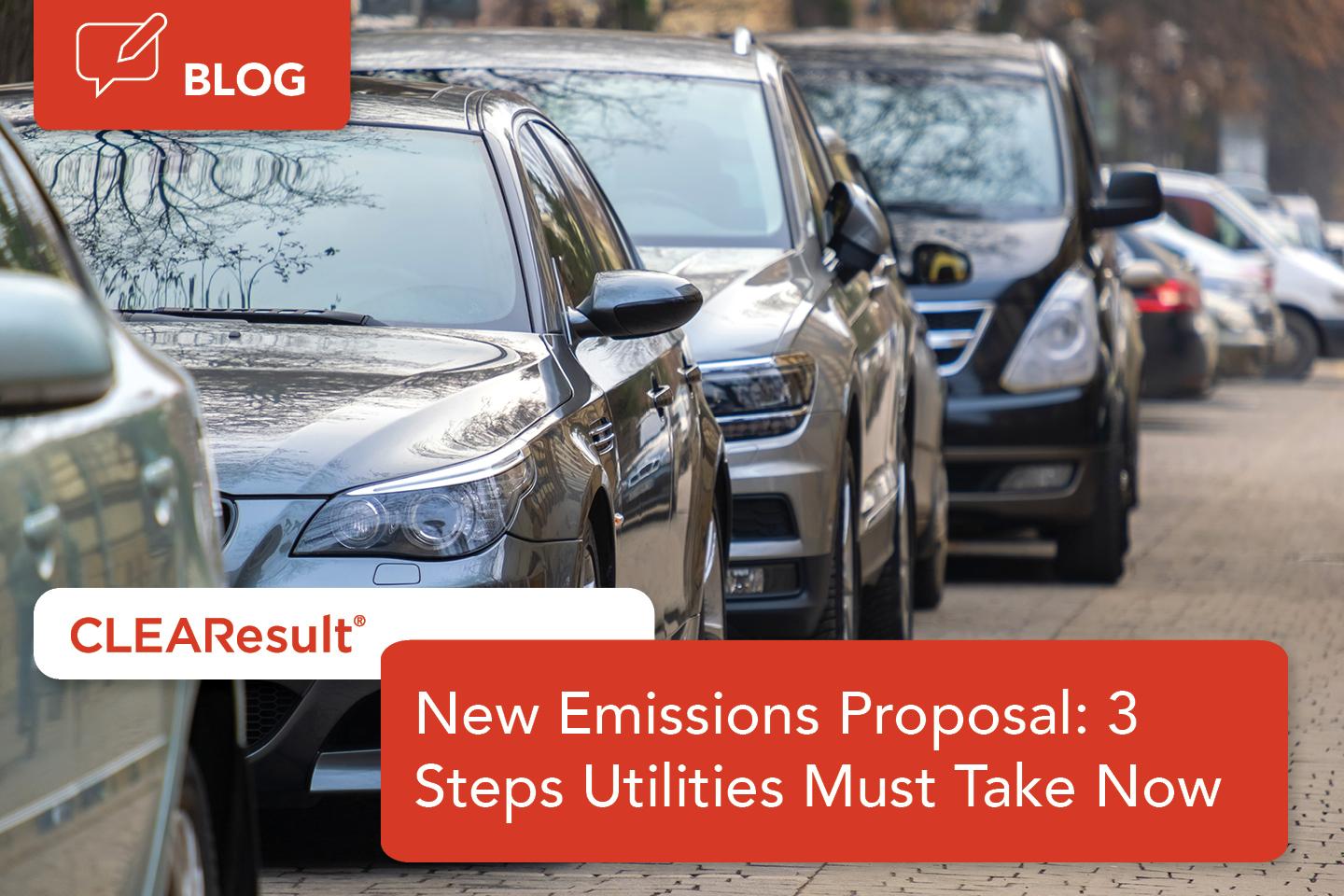New emissions proposal: 3 steps utilities must take now

Earlier this month, the Environmental Protection Agency (EPA) issued a proposal for stricter limits on vehicle emissions, driving automobile manufacturers to prioritize electric vehicle (EV) production and fleet owners to accelerate transportation electrification (TE) plans. This proposal has aggressive goals—to achieve them, the EPA projects all-electric vehicles will need to make up 67% of new light-duty vehicle sales and 46% of new medium-duty sales by 2032. The proposed standards will impact both residential and commercial and industrial markets.
We sat down with James Russell, head of our Transportation Electrification practice, to discuss what this means for utilities.
1. Why should utilities pay attention?
This proposal would be one of the country’s greatest actions ever taken to deliver emission reductions. It will push millions of households and fleets to transition to electric vehicles more quickly—great for the environment and challenging for utilities to keep pace with charging needs. For utilities already preparing for transportation electrification, the passage of this regulation will accelerate the plans they have in place to be ready for that eventuality. Utilities that haven’t started on creating an electrification transition plan will need to quickly move energy transition higher up on their priority list, not as a replacement to safety, reliability and rates, but as a must-be-considered factor affecting all three.
2. What impact will this proposed regulation have on charging?
We will need a lot more charging, and we’re going to have to get faster and more efficient about deploying it. In part, that will mean scaling up utility programs and customer support. I expect we’ll also see new business models emerge in the charging space. It’s exciting times as these new models will challenge existing ones. Keep in mind, our current models were new only a couple of years ago, so we’re moving quickly. Utilities will need to pay close attention to the market for new opportunities. Automakers, for one, will be watching this space for successful models and fold those into their price packages.
3. What impact will it have on the grid?
The grid, as it exists today, is not known for responding quickly to change, nor does it have the capacity to do so in terms of staff and equipment. Some key equipment like transformers and switchgear has lead times approaching two years, and service engineering teams are already stretched thin. That’s how the utility sector has historically operated—keeping it lean to control rates. What a regulation like this can do is to make electrification’s impact on the grid a certainty, providing a clear case for investment. That investment could be in infrastructure upgrades or in energy efficiency and demand response programs that reduce or shift existing loads to supply capacity for EV charging. If we know electricity usage is going to grow by say, 20% in the next decade, we can significantly increase utility investments and maintain reasonable rates, as the costs will be spread over a bigger rate base.
4. What are three actions utilities can do now to prepare?
- Create a plan - If you don’t already have a transportation electrification investment plan, now is the time to put that together. You can access the comprehensive impact analysis model the EPA has posted for reference. If you do have an investment plan, you should evaluate how your plan compares to the EPA scenario to make sure it is aligned.
- Evaluate your market - Utilities have a wealth of data, and now would be a good time to use it for planning and to communicate with the wide range of stakeholders, from policymakers to tradespeople. You should evaluate your current state and market to figure out what investments need to be made and understand the associated costs and timelines.
- Begin pilot testing - Even without major transportation electrification funding, most utilities have some capacity to launch pilots. Look for opportunities to start piloting vehicle to grid integrations across different markets and technologies to start moving in the right direction. We have a few examples currently underway and would be happy to share what this could look like. Contact our team to get started.
We will be following this proposal to see where it ends up, but it is only a sign of the times. Transportation electrification is inevitable, and all markets will have to adapt to its impact.
If passed, this regulation would require fleets to migrate to clean vehicles in the next 10 to 15 years.
Read more about fleet electrification in our blog series, beginning with Getting Started with Fleet Electrification: Evaluate Your Market.